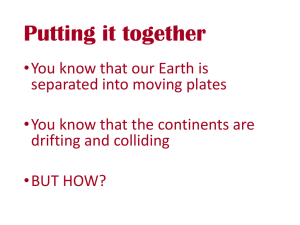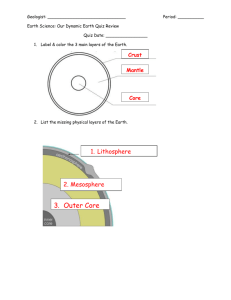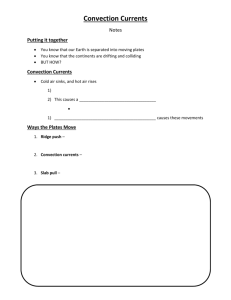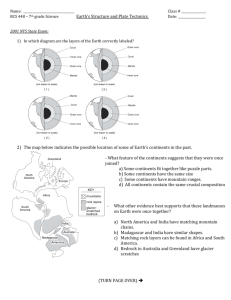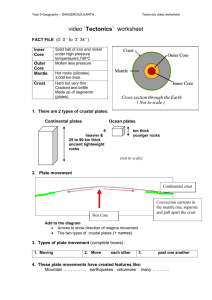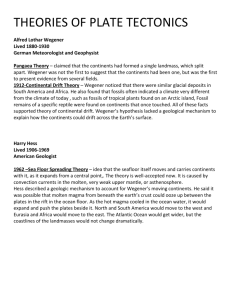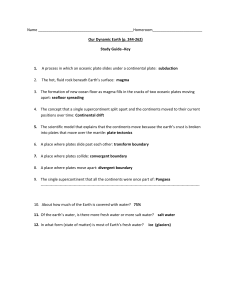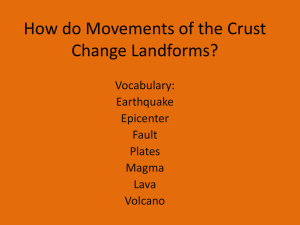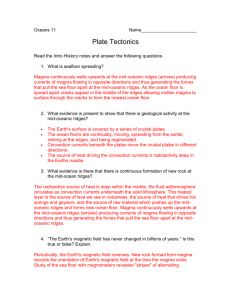Myers / Level 3 Study Guide Plate Tectonics Can You*?
advertisement
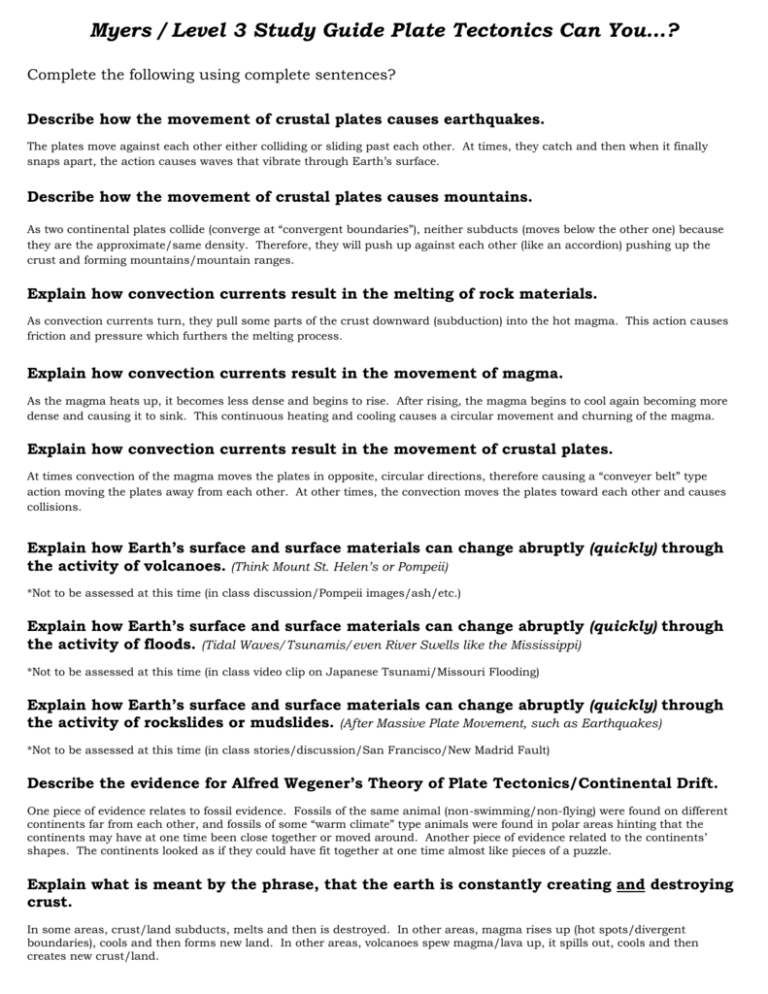
Myers / Level 3 Study Guide Plate Tectonics Can You…? Complete the following using complete sentences? Describe how the movement of crustal plates causes earthquakes. The plates move against each other either colliding or sliding past each other. At times, they catch and then when it finally snaps apart, the action causes waves that vibrate through Earth’s surface. Describe how the movement of crustal plates causes mountains. As two continental plates collide (converge at “convergent boundaries”), neither subducts (moves below the other one) because they are the approximate/same density. Therefore, they will push up against each other (like an accordion) pushing up the crust and forming mountains/mountain ranges. Explain how convection currents result in the melting of rock materials. As convection currents turn, they pull some parts of the crust downward (subduction) into the hot magma. This action causes friction and pressure which furthers the melting process. Explain how convection currents result in the movement of magma. As the magma heats up, it becomes less dense and begins to rise. After rising, the magma begins to cool again becoming more dense and causing it to sink. This continuous heating and cooling causes a circular movement and churning of the magma. Explain how convection currents result in the movement of crustal plates. At times convection of the magma moves the plates in opposite, circular directions, therefore causing a “conveyer belt” type action moving the plates away from each other. At other times, the convection moves the plates toward each other and causes collisions. Explain how Earth’s surface and surface materials can change abruptly (quickly) through the activity of volcanoes. (Think Mount St. Helen’s or Pompeii) *Not to be assessed at this time (in class discussion/Pompeii images/ash/etc.) Explain how Earth’s surface and surface materials can change abruptly (quickly) through the activity of floods. (Tidal Waves/Tsunamis/even River Swells like the Mississippi) *Not to be assessed at this time (in class video clip on Japanese Tsunami/Missouri Flooding) Explain how Earth’s surface and surface materials can change abruptly (quickly) through the activity of rockslides or mudslides. (After Massive Plate Movement, such as Earthquakes) *Not to be assessed at this time (in class stories/discussion/San Francisco/New Madrid Fault) Describe the evidence for Alfred Wegener’s Theory of Plate Tectonics/Continental Drift. One piece of evidence relates to fossil evidence. Fossils of the same animal (non-swimming/non-flying) were found on different continents far from each other, and fossils of some “warm climate” type animals were found in polar areas hinting that the continents may have at one time been close together or moved around. Another piece of evidence related to the continents’ shapes. The continents looked as if they could have fit together at one time almost like pieces of a puzzle. Explain what is meant by the phrase, that the earth is constantly creating and destroying crust. In some areas, crust/land subducts, melts and then is destroyed. In other areas, magma rises up (hot spots/divergent boundaries), cools and then forms new land. In other areas, volcanoes spew magma/lava up, it spills out, cools and then creates new crust/land.
